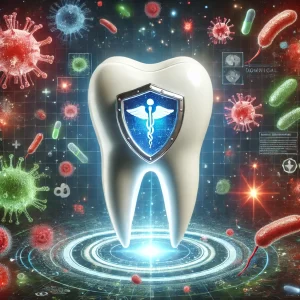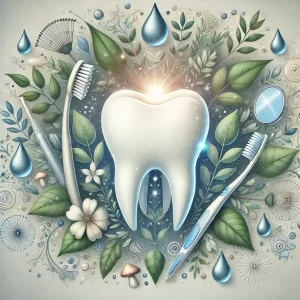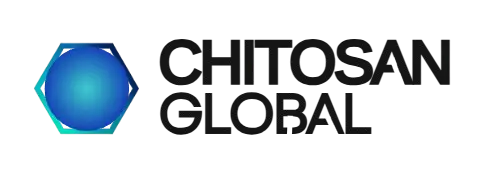
Got Chitosan?
Chitosan is a natural biopolymer extracted from the cell walls of fungi and the shells of crustaceans and insects. It’s derived from chitin, a structural component that gives mushrooms their rigidity and form.
Origin and Abundance
- Chitin is the second most abundant natural polysaccharide in nature, after cellulose.
- Most fungi contain 5%-7% chitin in their cell walls.
- Chitin is also found in the exoskeletons of crustaceans (crabs, shrimp, lobsters) and insects.
Pronunciation Guide
- Chitin: Pronounced “KITE-in” (emphasis on “kite”)
- Deacetylation: Pronounced “dee-a-SETTLE-ay-shun” (emphasis on “dee”)
- Acetyl: Pronounced “A-see-tl” (emphasis on “see”)
Chemical Structure and Properties
Chitosan is obtained through a process called deacetylation of chitin. This involves:
- Removing acetyl groups (CH3OH) from the chitin molecule
- Creating a polymer with free amine groups (NH2)
This chemical transformation gives chitosan its positive charge, differentiating it from its parent compound, chitin.
- Solubility: Unlike chitin, chitosan is soluble in acidic to neutral solutions, making it more versatile for various applications. Our food grade mushroom chitosan oligosaccharide is soluble in water at any pH. It is bactericidal at pH 6.4 and below. To purchase wholesale, click HERE
- Biocompatibility and Biodegradability: Chitosan is known for its excellent biocompatibility and biodegradability. It’s non-toxic and can be broken down by natural biological processes.
What are the benefits of using non-shellfish chitosan in dental & oral care?
Mushroom chitosan derived from sources like oyster mushrooms, presents several beneficial properties for dental oral care. (We do not recommend EVER putting shellfish-derived chitosan in ANY products that contact humans or animals.) Here’s a list of its functions and benefits:
Mushroom Chitosan in Dental/Oral Care
- Reduction of Dental Plaque and Periodontal Disease: Chitosan’s powerful antibacterial properties make it a formidable ally in the fight against oral health issues. By actively suppressing bacterial growth and breaking down stubborn biofilms, chitosan creates an inhospitable environment for harmful microorganisms in the mouth. This dual-action approach significantly reduces plaque formation on teeth and along the gum line, effectively lowering the risk of periodontal disease development. As a natural defender against oral pathogens, chitosan helps maintain a balanced oral microbiome, preventing the inflammation and tissue damage associated with gum disease. Its ability to penetrate and dismantle existing biofilms also makes chitosan an invaluable tool in combating persistent oral infections, offering a proactive solution for maintaining optimal dental health.

- Improved Wound Healing: Chitosan, a versatile biopolymer derived from chitin, exhibits remarkable properties that significantly enhance the healing process of oral tissues. Its unique ability to promote tissue regeneration accelerates the recovery of oral abrasions and surgical sites, leading to faster and more effective healing outcomes. This natural compound creates an optimal environment for cell proliferation and tissue repair, reducing inflammation and minimizing the risk of infection. As a result, patients experience quicker recovery times, less discomfort, and improved overall healing of oral wounds and post-surgical areas. The application of chitosan-based materials in dental procedures has thus become increasingly popular, offering promising advancements in oral health care and surgical recovery.

- Enhanced Efficacy of Oral Hygiene Products: Chitosan’s unique capacity to bind and gradually release therapeutic agents revolutionizes oral care products, significantly enhancing their efficacy. This remarkable property allows for extended protection against harmful oral pathogens, ensuring a longer-lasting defense for dental health. The integration of chitosan into toothpaste formulations is rapidly gaining traction in the dental care industry, with widespread adoption seemingly imminent. Forward-thinking companies are poised to capitalize on this innovation, as the market for chitosan-enhanced oral care products is set to expand dramatically. Savvy businesses should act swiftly to secure their share of this burgeoning market and stay ahead of the curve in dental hygiene advancements. Call us today.

- Safe and Natural Oral Care: Chitosan’s natural origins and remarkable properties make it an ideal candidate for revolutionizing oral hygiene products. As a biocompatible and biodegradable substance, it offers a safe and eco-friendly alternative to synthetic ingredients commonly found in dental care formulations. This natural polymer significantly reduces the risk of adverse reactions, making it particularly suitable for individuals with sensitive oral tissues or those prone to allergies. By incorporating chitosan into toothpaste, mouthwash, and other oral care products, manufacturers can create gentler yet highly effective solutions that promote optimal oral health without compromising on safety. This shift towards natural, body-friendly ingredients aligns perfectly with the growing consumer demand for safer and more sustainable personal care options.

- Anti-Inflammatory Properties: Chitosan’s anti-inflammatory properties make it a powerful ally in the fight against gum diseases. This natural compound has shown remarkable efficacy in reducing gum inflammation, offering a promising approach to both treating and preventing conditions such as gingivitis. By incorporating chitosan into oral care routines, individuals can potentially mitigate the swelling, redness, and discomfort associated with inflamed gums. Its ability to soothe irritated tissues and promote healing creates a healthier oral environment, potentially reducing the risk of more severe periodontal issues. As research continues to unveil chitosan’s benefits, it’s becoming increasingly clear that this versatile substance could play a crucial role in maintaining optimal gum health and supporting overall oral well-being.

Functions of Mushroom Chitosan in Dental Oral Care
- Antimicrobial Activity: Chitosan of the proper molecular weight (3kDa) and degree of deacetylation (>98%) inhibit the growth and activity of various pathogens in the oral cavity, helping prevent infections and complications like tooth decay and gum disease. To buy chitosan in bulk at wholesale prices, go HERE

- Biofilm Disruption: The right derivative of Chitosan can disrupt the structure and formation of bacterial biofilms on dental surfaces, which are a major cause of plaque buildup and cavities. Call us today to discuss the right derivative for your application. Call 423-202-6145. Ask for Steve Nice

- Carrier for Therapeutic Agents:
Chitosan’s versatility extends beyond its inherent benefits, as it excels as a carrier and delivery system for other active ingredients in dental products. This natural polymer creates a synergistic effect, enhancing the stability and potency of various oral care formulations. By encapsulating or binding to other beneficial compounds, chitosan facilitates their controlled release, ensuring a more sustained and targeted delivery within the oral cavity. This unique property allows for improved absorption and prolonged action of active ingredients, maximizing their therapeutic potential. As a result, dental products incorporating chitosan as a delivery medium can achieve greater efficacy, providing users with more comprehensive and long-lasting oral health benefits. This innovative approach to ingredient delivery is revolutionizing the development of advanced dental care solutions.

- Wound Healing Support:
Chitosan’s remarkable ability to accelerate oral tissue healing makes it a valuable asset in post-dental surgery recovery and the treatment of mouth ulcers. This natural biopolymer stimulates and enhances cellular activities crucial for tissue regeneration, creating an optimal environment for rapid healing. By promoting cell proliferation and migration, chitosan helps to rebuild damaged oral tissues more efficiently. Its application can significantly reduce recovery times following dental procedures, alleviating discomfort and minimizing the risk of complications. For those suffering from persistent mouth ulcers, chitosan-based treatments offer hope for faster resolution and improved oral comfort. As research continues to unveil chitosan’s regenerative properties, its integration into post-operative care and ulcer management protocols is becoming increasingly prevalent in modern dentistry.

What are the forms of chitosan used in dental & oral care products?
Mushroom chitosan can be incorporated into various forms of products for dental and oral care. Each form leverages the unique properties of chitosan to provide specific benefits to oral health.
The dosage or formulation guidelines for incorporating mushroom chitosan into dental and oral care products vary based on the specific application and desired therapeutic effect.
Here below are some common forms, its recommended formula guideline and which chitosan is used with better effectiveness:
- Toothpaste: Chitosan is often added to toothpaste formulations to enhance their antimicrobial and anti-plaque properties. It helps in the sustained release of active ingredients, improving the overall efficacy of the toothpaste in preventing dental caries and gum diseases.
- Chitosan Concentration: Typically ranges from 0.2% to 2% by weight.
- Application: Chitosan is incorporated into the base formulation of toothpaste to enhance antimicrobial activity and support the control of plaque and gingivitis.
- Suitable Chitosan Type: Chitosan Hydrochloride is commonly used in toothpaste because it is soluble in water, which makes it easier to incorporate into toothpaste formulations. It also has good antimicrobial properties which are essential for preventing plaque and gingivitis.

- Mouthwash: As a component in mouthwashes, chitosan can help reduce bacterial levels in the mouth, prevent the formation of dental plaque, and promote healthier gums. Its bioadhesive properties ensure that it clings to oral surfaces, providing a longer-lasting protective effect.
- Chitosan Concentration: Usually between 0.05% and 1%.
- Application: Used as an active ingredient in mouthwashes to exploit its bioadhesive properties for prolonged action against bacteria and for enhancing the repair of oral tissues.
- Suitable Chitosan Type: Chitosan Hydrochloride and Chitosan Oligosaccharide are both suitable. Chitosan hydrochloride for its solubility and bioadhesive properties, and oligosaccharides for their enhanced solubility and biocompatibility, making them gentle and effective in mouthwash formulations.

- Dental Gels: Chitosan-based gels are used particularly for their wound-healing and bioadhesive properties. Chitosan infused gels can be applied directly to the gums or on dental prostheses to aid in healing, reduce discomfort, and protect against microbial infections.
- Chitosan Concentration: Around 1% to 3%.
- Application: Dental gels containing chitosan are used for their wound-healing properties, particularly after dental surgery or for treating periodontal pockets.
- Suitable Chitosan Type: Carboxymethyl Chitosan is ideal for dental gels due to its higher solubility and superior mucoadhesive properties. This type of chitosan can be very effective in forming gels that adhere to the gums or mucosa, providing a sustained release of active ingredients.

- Chewing Gums: Incorporating chitosan into chewing gum allows for the active components to be released slowly as the gum is chewed, aiding in the mechanical removal of food particles and plaque, while also delivering antimicrobial and healing benefits directly to the oral cavity.
- Chitosan Concentration: Chewing gums might incorporate chitosan at around 0.5% to 2%.
- Application: Chitosan in chewing gums helps in mechanically cleaning teeth while delivering antimicrobial benefit via electrostatic action. It can provide benefit throughout the oral cavity over extended periods.
- Suitable Chitosan Type: Chitosan Oligosaccharide is a great fit for chewing gums due to its smaller molecule size, which can enhance its integration into gums and release active ingredients over an extended period as the gum is chewed.

- Dental Varnishes and Sealants: Chitosan is used in varnishes and sealants that are applied to teeth, either to prevent decay or as a treatment following dental procedures. These products form a protective layer over the enamel, releasing chitosan and other agents over time to strengthen teeth and reduce sensitivity.
- Chitosan Concentration: Typically around 1% to 5%.
- Application: These products use chitosan for its ability to form a protective barrier on teeth surfaces, slowly releasing therapeutic agents to aid in the remineralization of enamel and prevent decay.
- Suitable Chitosan Type: Acid-Soluble Chitosan is often preferred for varnishes and sealants because it can form durable, adhesive films that strongly bind to enamel and dentin. This form of chitosan is effective in creating a barrier against acid attacks and promoting enamel remineralization.

- Dental Films: These thin films can be placed on the gums or teeth to deliver concentrated doses of chitosan and other therapeutic substances directly to needed areas. They are particularly useful for targeted therapy, such as treating localized infections or promoting the healing of specific oral wounds.
- Chitosan Concentration: Can vary widely, typically from 1% to 3%.
- Application: These films are designed to release their active ingredients in a controlled manner, specifically targeting affected areas within the mouth.
- Suitable Chitosan Type: Carboxymethyl Chitosan is suitable for dental films because of its excellent film-forming ability and its enhanced solubility, which aids in better delivery and retention of therapeutic agents.

The versatility of chitosan in oral health applications allows for tailored solutions addressing specific dental needs and treatments. However, product development requires careful consideration of various factors beyond just chitosan concentration. Formulations must account for additional components like flavoring agents, stabilizers, and complementary active ingredients, while also optimizing pH, viscosity, and stability for both efficacy and consumer acceptance. Rigorous testing, including clinical trials where necessary, is crucial to ensure product safety and effectiveness. Regulatory compliance, especially for products making specific health claims, is also a key consideration. The choice of a chitosan derivative should be strategically aligned with the product’s intended functionality and the desired release profile of active ingredients. This comprehensive approach to chitosan-based oral care product development maximizes the potential benefits while ensuring regulatory compliance and market viability.
How is Mushroom Chitosan Made?
The production process of mushroom chitosan is mainly obtained by grinding up oyster mushrooms, deproteinating with dilute acid or alkali, deacetylating, drying, etc.
Here is a simplified flowchart of the production process of mushroom chitosan for your reference.

The flowchart of mushroom chitosan illustrates the process of producing chitosan and its derivatives from mushroom material. Here’s a summary of the key content:
- Starting Material: The process begins with mushroom material as the source.
- Filtration: The mushroom material undergoes a filtration process.
- Protein Removal: Proteins are then removed from the filtered material using an alkali solution.
- Ash Removal: Ash content is subsequently removed with acid.
- Chitin Extraction:
- Acid is added without bubbles to proceed to the next stage.
- Chitin is extracted, which is not soluble in acid.
- An acetylation step removes the acetyl groups from the chitin using sodium hydroxide (NaOH), converting it into chitosan, which is soluble in acid.
- Drying: The acid-soluble chitosan is then dried to produce the final mushroom chitosan product, showcased as a white powder.
- Chitosan Derivatives: Parallel to the drying process, there is a branch leading to the production of various chitosan derivatives:
- Chitosan Hydrochloride: Chitosan converted into its hydrochloride form.
- Enzyme Hydrolysis: Produces chitosan oligosaccharide through enzymatic hydrolysis.
- Carboxymethyl Chitosan: Derived through the carboxymethylation of chitosan.
The flowchart depicts a methodical approach to converting mushroom material into various forms of chitosan, focusing on the purification and chemical modification steps necessary to achieve different chitosan-based products for use in various applications.
Discussion of Mushroom Chitosan in Dental & Oral Care
Chitosan has shown significant promise in enhancing dental and oral care products due to its unique biological properties.
This biopolymer is particularly valued for its antimicrobial capabilities, which help inhibit the growth of harmful bacteria, thereby reducing plaque formation, gingivitis, and periodontal diseases.
Additionally, chitosan’s ability to disrupt biofilms, which are protective layers formed by bacteria, further bolsters its efficacy in oral health maintenance. It also enhances the mechanical removal of food particles and plaque when used in formulations like chewing gums.

Chitosan is employed in a variety of dental care products such as toothpaste, mouthwash, dental gels, and varnishes due to its bioadhesive properties, which extend the retention and effectiveness of therapeutic agents in the oral cavity.
Its biocompatibility, biodegradability and non-toxic nature make it a safe choice for regular use, contributing to its popularity in developing natural and effective dental care solutions.
The diverse application of chitosan in dental products, ranging from caries prevention to healing support after dental surgeries, highlights its versatility and potential in improving oral health care regimens.
Book a Free Consultation
If you don’t know what type of chitosan is best for your situation, Book an appointment. we will offer you an initial 30-minute consultation and product quotation at no charge.
